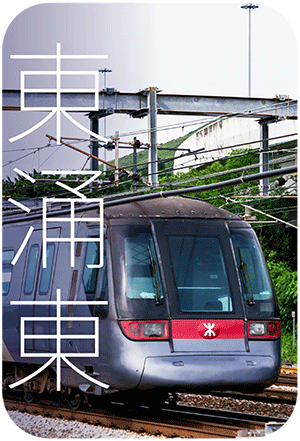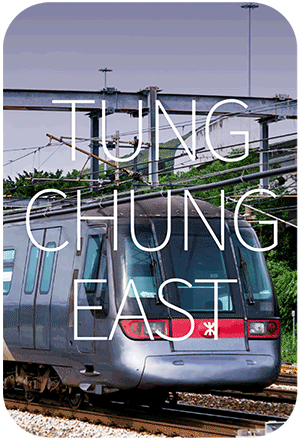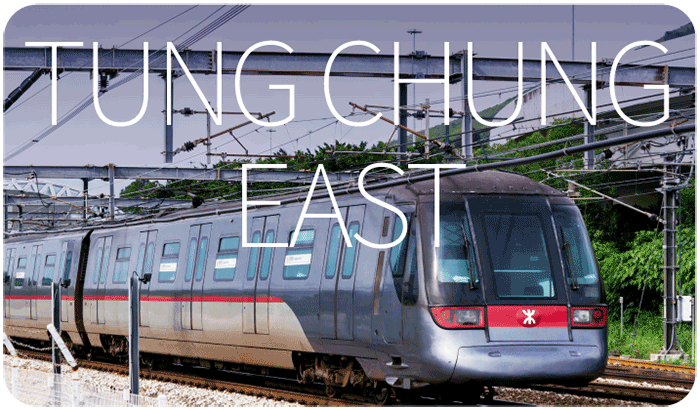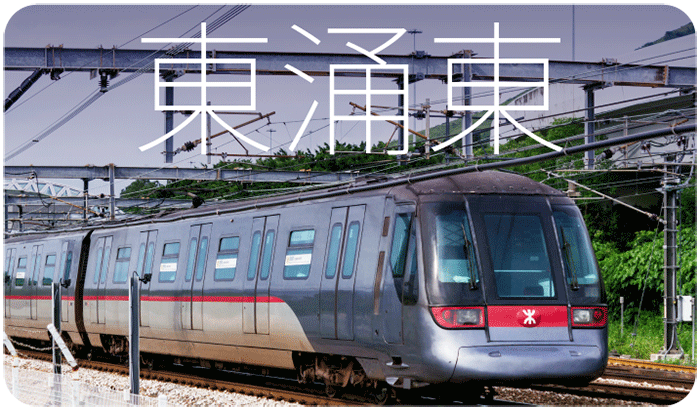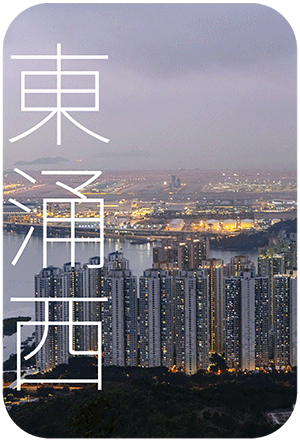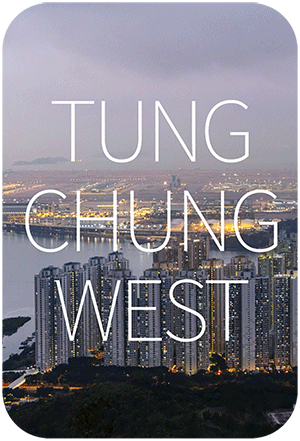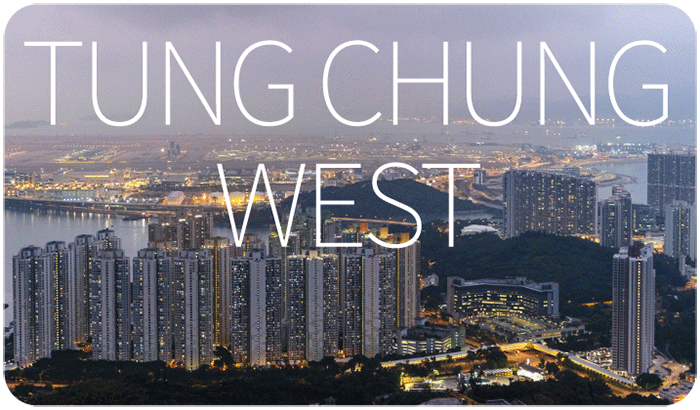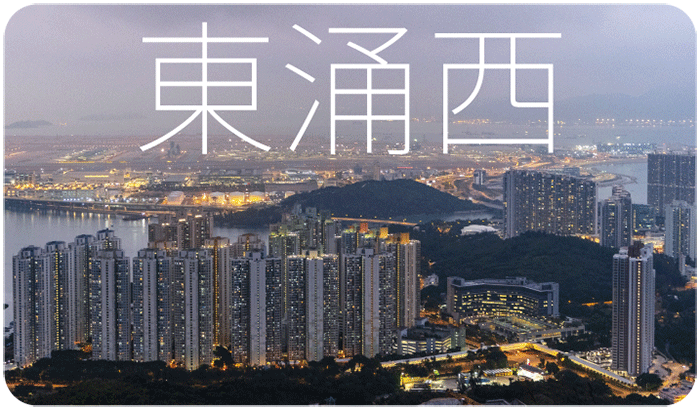On Track to Success: Crucial preparations for turnout installations
To facilitate the development of the Tung Chung New Town Extension, the new Tung Chung East Station is located in the Tung Chung East reclamation area, necessitating the diversion of the existing Tung Chung Line tracks to the north to connect to the new station. The major track diversion works involve: 1) Construction of a new railway section, 2) Modification of railway facilities such as overhead lines, 3) Modification of some existing signalling system equipment, and 4) Installation of four turnouts in stages on both tracks of the Tung Chung Line to allow trains to enter the new section.
The two turnout installations on the Hong Kong-bound track were completed in two late night sessions in October last year and April this year, respectively, thanks to four crucial early-stage preparations.
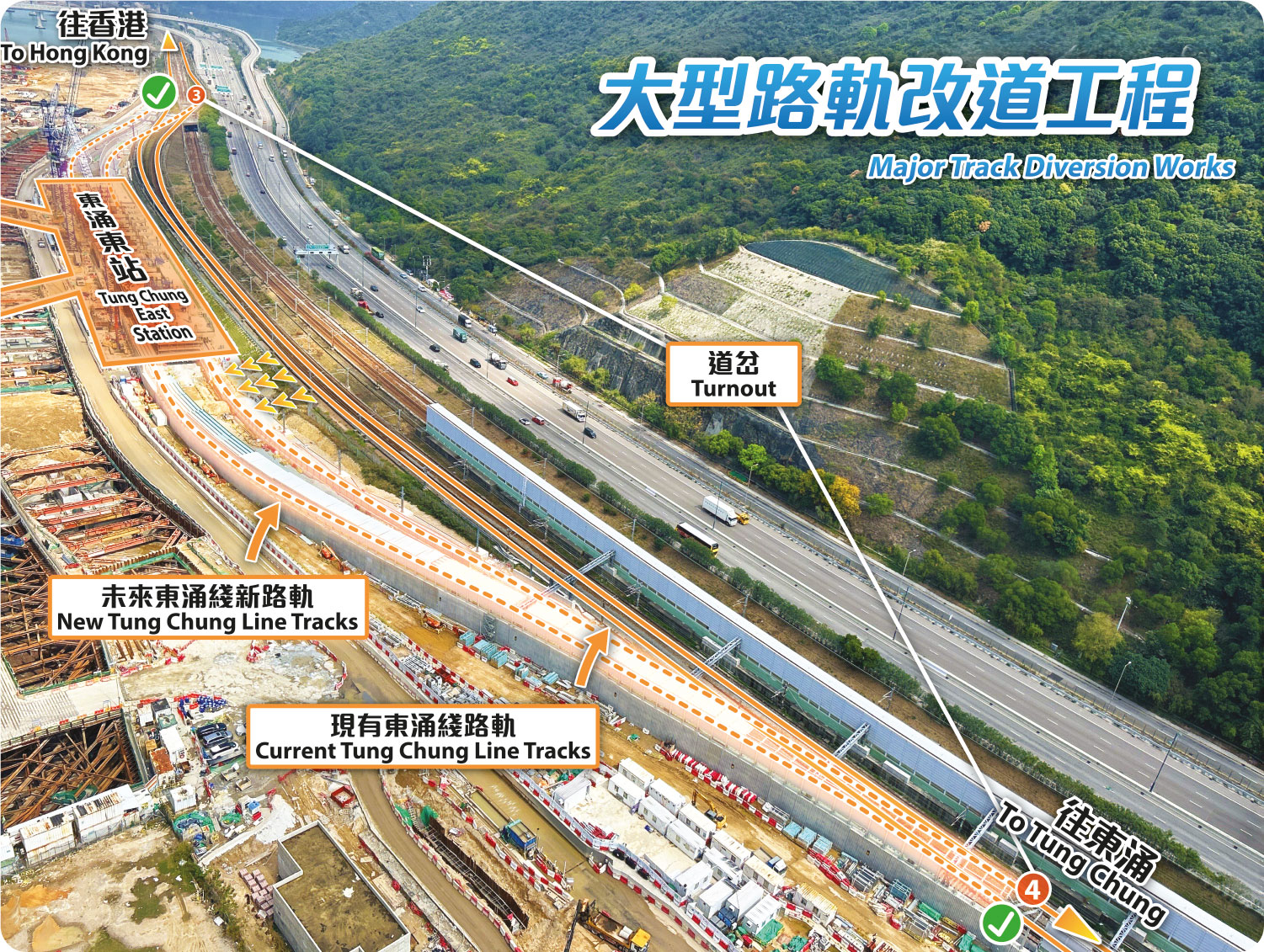
1) Close Coordination and Stringent Planning
The turnout installation works are challenging and need to be carried out on the operating Tung Chung Line tracks. To minimise the impact on daily train services and accommodate railway maintenance work after the last train at night, the project and operations teams closely coordinated and planned in detail, breaking down the pre-procedures for installing the turnouts into hundreds of nights over two to three nights a week, within the “golden two hours”. Therefore, on the nights of the critical turnout installations, Tung Chung Line train service only needed to be slightly adjusted, with services between Tung Chung and Sunny Bay stations ending about two hours earlier to carry out the installation which requires a couple of continuous work hours.
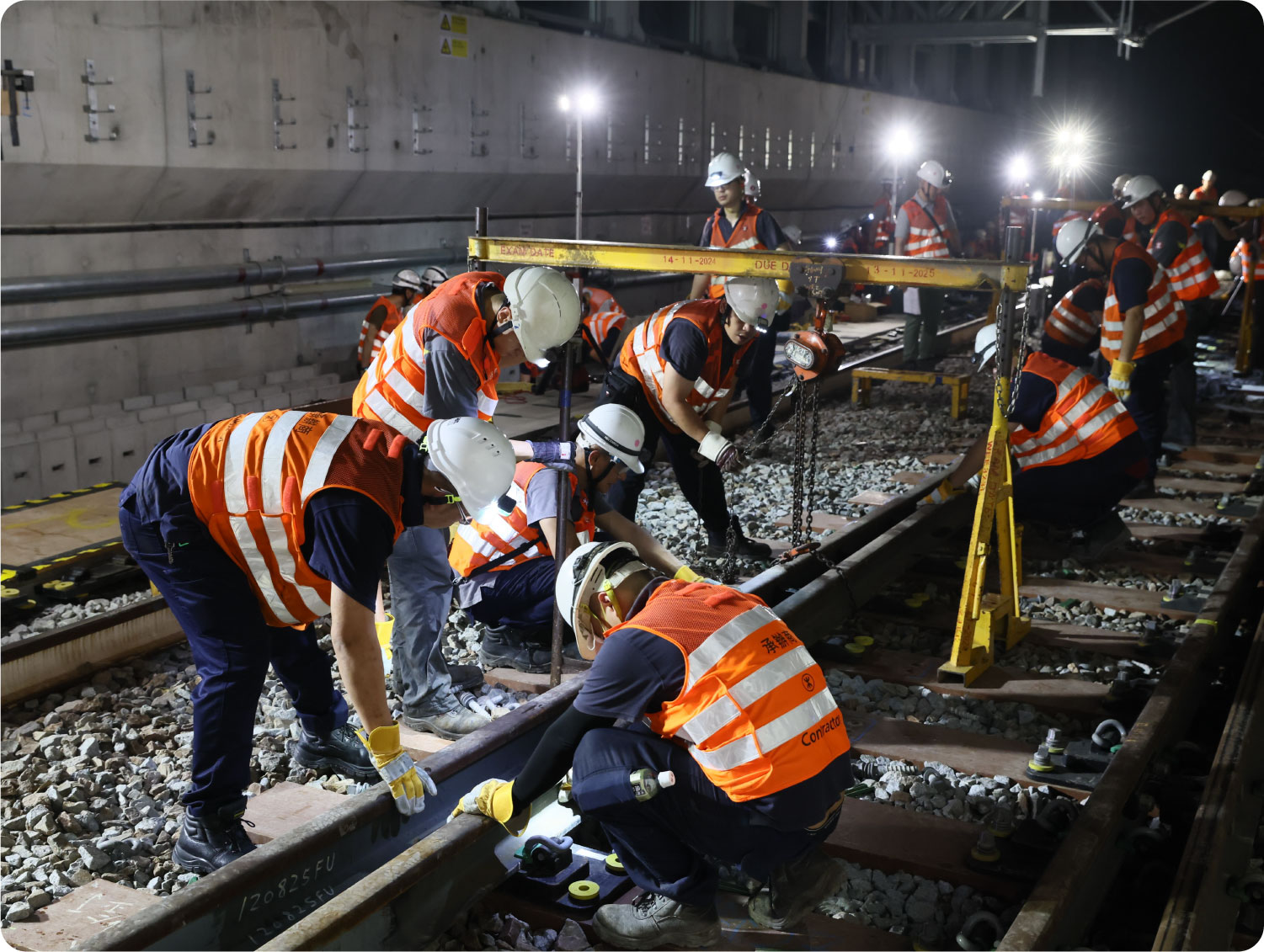
2) Making Good Use of Technology for Track Slewing
To accommodate the new alignment after the Tung Chung East Section diversion, the existing Tung Chung Line tracks need to be gradually adjusted within tight timeframes during non-traffic hours. Track slewing both tracks requires about 300 nights. These procedures include adjusting the tracks’ angle and ballast precisely for comfortable train rides. The team made good use of technology, introducing an Austrian-made tamping machine to accurately detect track positions, adjust tracks, and tamp ballast.

3) Streamlining the Turnout Installation Process
Before installing the turnouts, the team spent about 20 nights in non-traffic hours replacing the original concrete sleepers with synthetic sleepers for turnouts, and co-designed with our design department a temporary welding base plate for the switch to streamline the installation process, shorten the time required, and hence reduce the impact on daily train services.
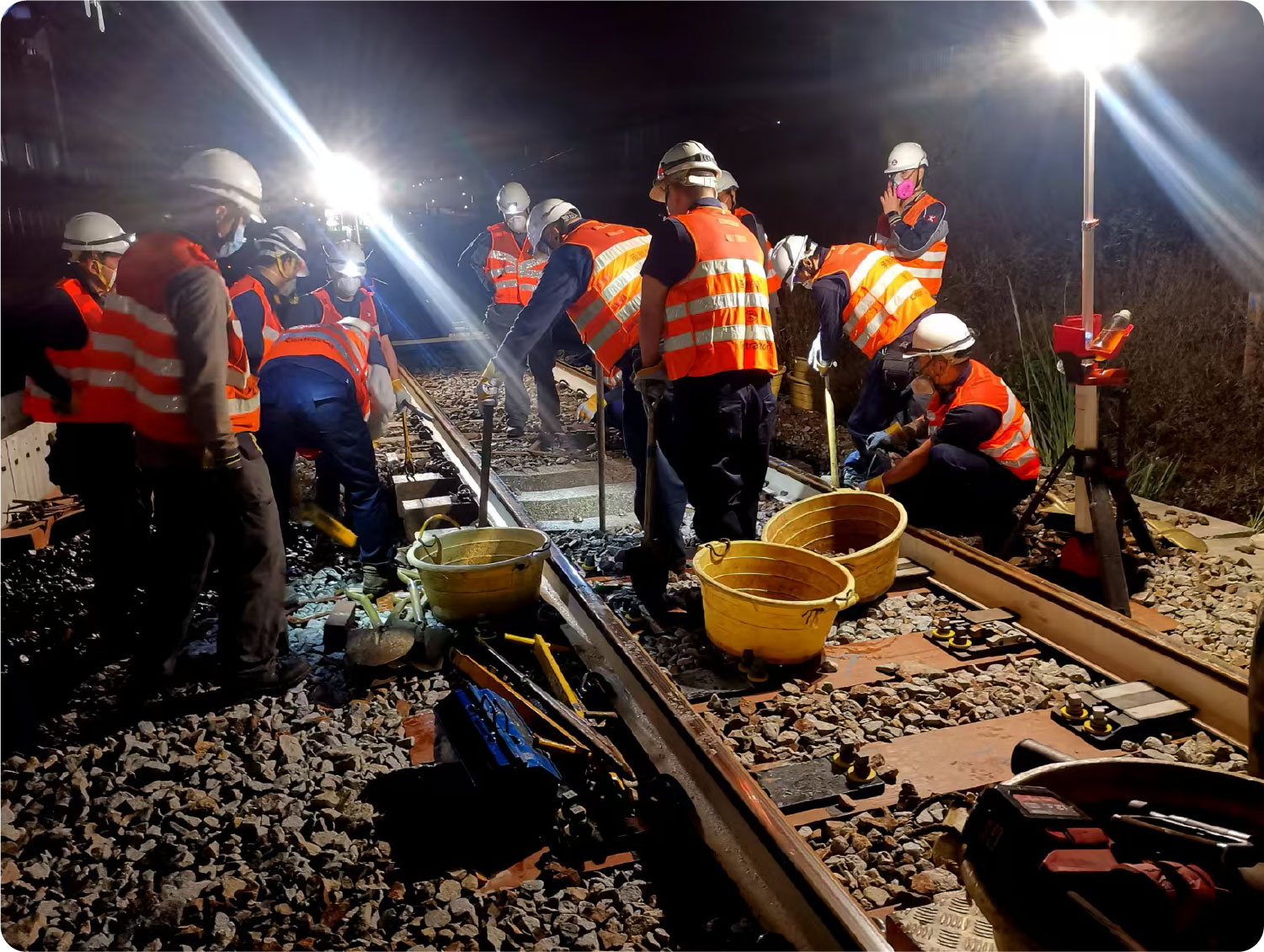
4) Abundant Preparations and Drills
When formulating a detailed installation plan, each task was arranged with minute-by-minute precision. Rehearsals at the practice ground during the day and on-site drills at night were arranged to ensure preparedness. These enabled the teams to execute the tasks swiftly and accurately, avoiding any impact on passenger service the next day.

The project team has since completed the laying of the new Hong Kong-bound tracks, connecting the two installed turnouts, which allowed engineering trains to enter the works area to install overhead lines and set up trackside equipment for the power supply, signalling system, and telecommunications. The track slewing works for the Tung Chung-bound track will also begin soon, with the third and fourth turnout installations to be carried out in 2026 to 2027. The various construction works under the Tung Chung Line Extension project are making orderly progress, with completion targeted for 2029.
